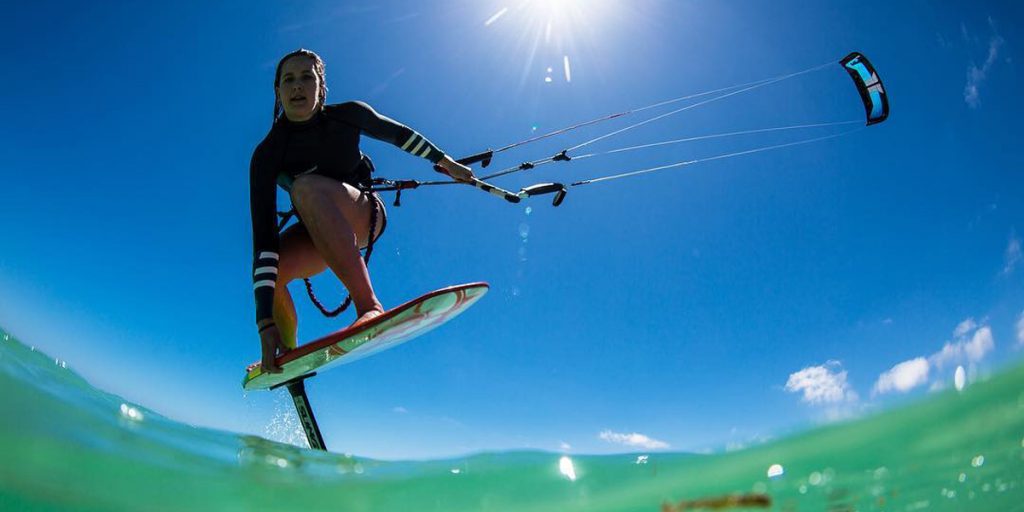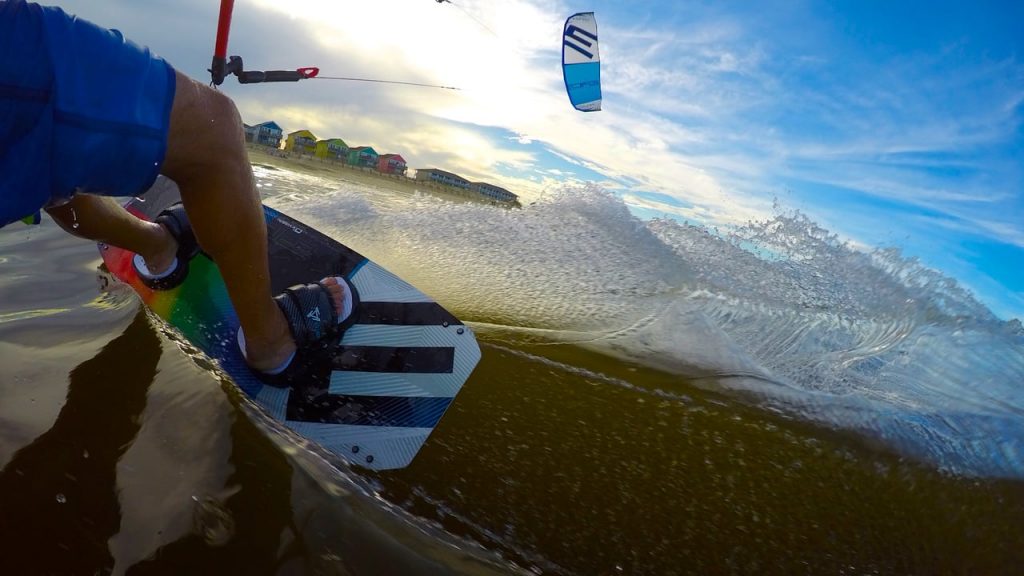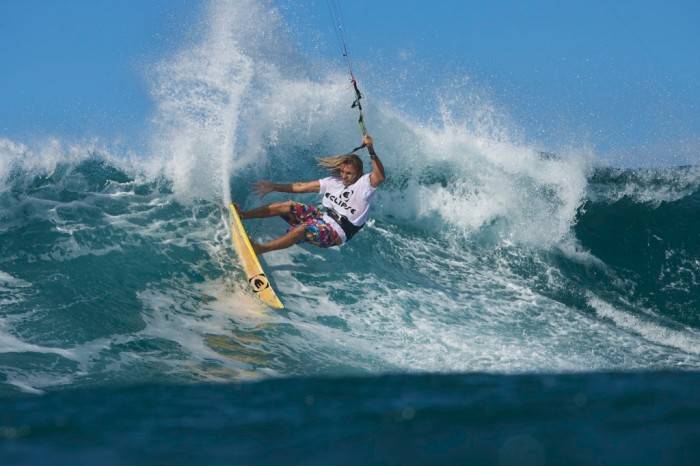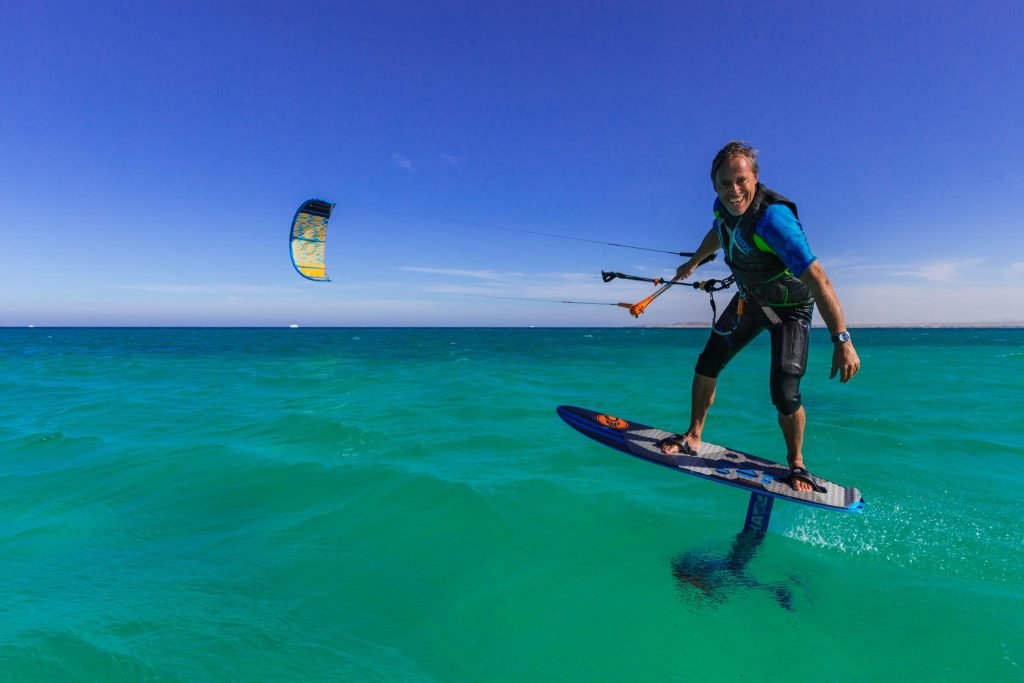
Welcome to our boards buyer’s guide. As you are probably aware of at this point, there is an ever expanding choice of kitesurfing disciplines, and more than any other item in the kitesurfing quiver, it is the board that defines a rider’s style of kitesurfing. Perhaps the first consideration to make when choosing a board is – what riding style is most appropriate for you? Ask yourself some simple questions. Such as:
- What is it that attracts you to kitesurfing? Big jumps? Speed? Easy cruising? Perhaps you’re from a surfing background and would like to replicate this?
- What conditions are available to you locally? Strong winds? Light winds? No waves? Shallow water?
- What is your style and physical ability? Are you athletic? Do you enjoy risky thrills? Are you senior? Are you looking to keep it safe?
Answering these questions will give you a good idea of what style of kiting is a good choice for you. Let’s look at the three main board types; what they are used for, the pros and cons, and further considerations.
The Twintip

For general riding/Freestyle/Big Air. If you are looking to get into general kitesurfing, the twin tip is a great choice. Both their versatility and ease of use are unmatched by any other board design, and as such, they are the best option for beginners looking to either enjoy a leisurely cruise, or to develop their skills with an almost endless range of tricks. Furthermore, instructors teach with twintips, so they make a logical choice going forward.
Pros
- Superb for beginners
- Versatile – ideal for jumping and general freestyle (crazy twisty tricks)
- Strong, simple and durable in design and build
- Budget choice
- Small and easy to transport
- Highly developed market – a big range of choice available
- Can be ridden forwards and backwards (no tacking needed)
Cons
- Not the best choice for light winds
- Upwind ability is relatively limited
Further Considerations
- Size. Both length and width of twin tips vary. Larger sizes are best for heavier riders, and provided optimal up-riding ability and stability. Smaller boards suit lighter riders, and are more nimble and best for tricks. Larger boards favour beginners.
- Add-ons. You need to choose pads and straps that are comfortable and will keep the board on your feet. Fins come in many sizes. Large fins are a great for beginners as they improve board water ‘grip’, and upwind ability. However, they limit board manoeuvrability, so small fines favour intermediate to advanced riders who like doing tricks. Larger fins favour beginner progression.
- Construction. Boards are constructed from a range of materials, including wood, fibreglass and carbon fibre, and these affect both board weight and flexibility. Heavier boards tend to be less flexible. These are good for beginners whom benefit from a planted feel, and a stronger, larger board. Lighter boards, such as those made from carbon fibre, favour more advanced riders with dynamic styles, partly as they provided a softer landing from jumps. Any material is suitable for beginners.
The Surfboard

For wave riding. The marrying of kite and surfboard is a great option for riders looking to replicate the purity of surfing, but are limited by wave size, or the frequency of ideal surfing conditions. The addition of a kite increase the chances of catching swell, whilst enabling riding between waves. As this style demands a more dynamic kite flying technique, and the ability to spin the board round when tacking, it favours intermediate to advanced riders. That said, there is no reason why a beginner cannot go straight into wave riding.
Pros
- Replicates feel of surfing
- Enhanced carving ability
- Great for lighter winds
- Enhanced upwind ability
- Strap and strapless options
- Some offer hydrofoil addition option
Cons
- Less easy to transport
- Fragile
- More costly
- Limited freestyle ability
- Can be ridden only forwards
Further Considerations
- Size. Larger boards are the more versatile option. They are effective at catching smaller waves, being ridden in light winds, and favour heavier riders. Smaller boards offer improved manoeuvrability, are better for developing tricks, and agile riding. For the beginner, a larger board is favourable.
- Strapless or straps. Straps make board starts easier, whilst making it less likely for the board to detach from the rider. These are also a great option for tricks, such as jumps. However, they can be limiting when it comes to turning the board around, as they are an extra feature to navigate. Strapless pads are a better choice for an agile riding style that includes lots of tacking and carving. Both styles are suitable for beginners.
- Fins. These are needed to aid the power transfer, and provide improved board control. Smaller fins are best for light riders whom have wave-riding experience. This gives a more agile ride, especially when carving and taking turns. Larger fins favour heavier riders. These make board starts easier, improve upwind ability, and provide a more planted feel to the board at higher speeds. Board design offers a host of fin configurations that can be further experimented with to give the desired ride. We recommend larger fins for beginners.
The Hydrofoil

For speed/light-winds/competition. The hydrofoil board is the most recent addition of riding styles. Coupled with the development of the foil kite, it provides a light-wind performance that is far from matched by any other setup. Their superb upwind ability has popularised racing formats around the globe, and they have displaced the once common racing board thanks to their superior performance. Hyrdofoil riding is an ideal choices for riders whom have a founding in surfboards and twin-tips. A rider’s ability to master the hydrofoil comes down to learning a set of smaller details, such as weight displacement on the board. As such, one-on-one tuition with a dedicated instructor is highly recommended.
Pros
- Great for light winds
- Superior upwind ability
- Smooth ride can favour those with medical conditions, such as sore knees
- Developed competition network
- Many setups and gear choices available
Cons
- Challenging to learn
- Expense of setup
- Requires car/van to transport
- Longer equipment setup period
- Favours flat and deep water
Futher Considerations
- Wing size. The size of the wing on the end of the mast affects both the stability and lift of the board. Larger wings offer greater stability, and an easier transition from riding flat on the water to gliding on the foil. Smaller wings offer greater agility and speed. Larger wings are best for beginners and heavier riders.
- Board size. Higher volume boards are easier for standing on the board at the beginning of a ride, and are ideal for recovering from nose dives when experimenting with weight displacement. They are also favourable for heavier riders. Smaller boards are more agile. Larger boards are best for beginners.
- Mast length. Longer masts are suitable for a broader range of conditions. They can handle choppier waters as the mast length ensures minimal contact with the board. Shorter masts provide improved control on the turn and better recovery when experimenting with weight distribution. Shorter masts are best for beginners.
- Fuselage length. This is the item that defines the distance between the front and back wing. This is like the stance of the board. The shorter distance, the more manoeuvrable and agile the ride. The longer the distance, the better the stability of the board – particularly favourable when learning to tack.Longer fuselages favour beginner riders.
- Construction Material. There are two choices; aluminium and carbon. The former is ideal for limited budgets. Parts can be liable to seizing salt water ingression, therefore require more maintenance. More expensive carbon fibre boards offer marginal performance increases, and less maintenance. The material is more expensive. Some brands offer a hybrid setup that marries the best of both materials. Both material types are suitable for beginners.
In Conclusion
This guide will provide you with some clarity about what board choice is suitable for you. As you can see, there are many choices to choose from. Speak with one of our friendly staff members to discuss in more detail what it is you are looking for, so we can find your ideal setup that will reward with many hours of thrills on the water. We hope you’ve enjoyed reding this boards buyer’s guide.
